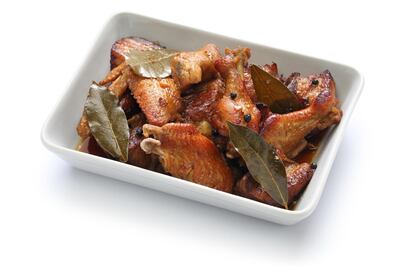Like many Filipinos, I grew up eating adobo a lot.
For one, it's easier to make than other dishes. Its ingredients consist of pantry foods that are almost always available in Filipino households: vinegar, soy sauce, garlic and chicken or pork.
Once you have those main components, you are good to go.
What really fascinates me about the dish is its infinite iterations. If you're asking, my favourite adobo is infused with coconut milk.
The Philippines is celebrating its 125th Independence Day on Monday – but as someone who lives overseas and enjoys writing about food, the occasion is making me confront an embarrassing reality: whenever non-Filipinos ask me to describe our cuisine, I find myself in a haze.
Maybe it isn't just me. Although adobo is as straightforward as it comes, Filipino cuisine packs a complex history, which combines pre-colonial influences with centuries of foreign rule, from Spain to Japan.
The Philippines is also an archipelagic country of more than 7,000 islands, home to hundreds of distinct communities who each speak different languages and are exposed to varying geographic environments.

This combination makes it impossible to generalise the Filipino palate, and any attempt to do so is met with overwhelming scepticism.
The late Filipino food scholar Doreen Gamboa Fernandez, who was highly regarded for bringing the cuisine to the fore through her writing, offers one of the best descriptions of the way the cuisine has been shaped over the years.
In her 1988 journal article, Culture Ingested: Notes on the Indigenisation of Philippine Food, she said Filipinos have been used to “indigenising” foreign food, eventually turning them into Filipino staples.
“The process seems to start with a foreign dish in its original form, brought in by foreigners," Fernandez wrote.
"It is then taught to a native cook, who naturally adapts it to the tastes he knows and the ingredients he can get.
“Eventually, he improvises on it, thus creating a new dish that, in time, becomes so entrenched in cuisine and lifestyle that its origins are practically forgotten.”
A lot of the popular Filipino dishes are, in one way or another, derived from this process, including adobo, which has Hispanic influences. Another example is the stir-fried noodle dish pancit, which we got from the Chinese.
Aside from these obvious cultural influences, Filipino cuisine is also shaped by the ingredients that are available locally, which vary from region to region.
To further complicate the matter, one of the Philippines' biggest exports is its people.
The Filipino diaspora consists of more than 10 million migrants scattered around the world, with many living and working in the Middle East, myself included.
We take what we know from our kitchens back home to wherever we go, recreate our favourite childhood dishes with ingredients that we find in Asian supermarkets around the world, and hope that, at the very least, they conjure the right amount of nostalgia.
Our history, geographic and ethnic make-up, as well as daily experiences, may be the perfect recipe for cuisine confusion but they are also what makes our food truly remarkable.
Of the several major Filipino dishes – the tangy sinigang, the soothing tinola and the hearty caldereta – for me, adobo best captures our complex relationship with food.
Ask any Filipino to describe the dish and they will give varying versions, but the basic components remain the same.
Some people like their adobo dry, which involves ingredient adjustments or different cooking methods, and others like theirs saucy.
Remove the soy sauce, replace it with salt and you get adobong puti, or white adobo.
Then add a cup of coconut milk and you get adobo sa gata, a creamier version of the dish that features prominent fruity notes.
Replace the meat with squid and you get adobong pusit, where the sauce is blackened by pouring the ink into the stew.
Take out the meat altogether and use water spinach, then you get adobong kangkong, a vegetarian-friendly version.
Some people add a good amount of sugar to make the dish sweet. Others add red or green chillies to make it hot. Then there are people who prefer adding potatoes or hard-boiled eggs, or both.
From small ingredient adjustments to major alterations, the dish is still an adobo, and every Filipino respects these changes, wherever they come from and whatever version they are used to eating.
For me, the essence of Filipino cuisine is best represented by this very mixing and matching. In fact, not just our cuisine, but our culture in general.
For years, we have done whatever we could to really define who we are as a people, and it's been challenging to say the least, as we continue to carry the harrowing baggage of colonialism.
But just like a bowl of adobo, we thrive in our ability to adapt.
This Philippine Independence Day, I will make my favourite version of the dish and find comfort in the fact that Filipino cuisine is indescribable.






